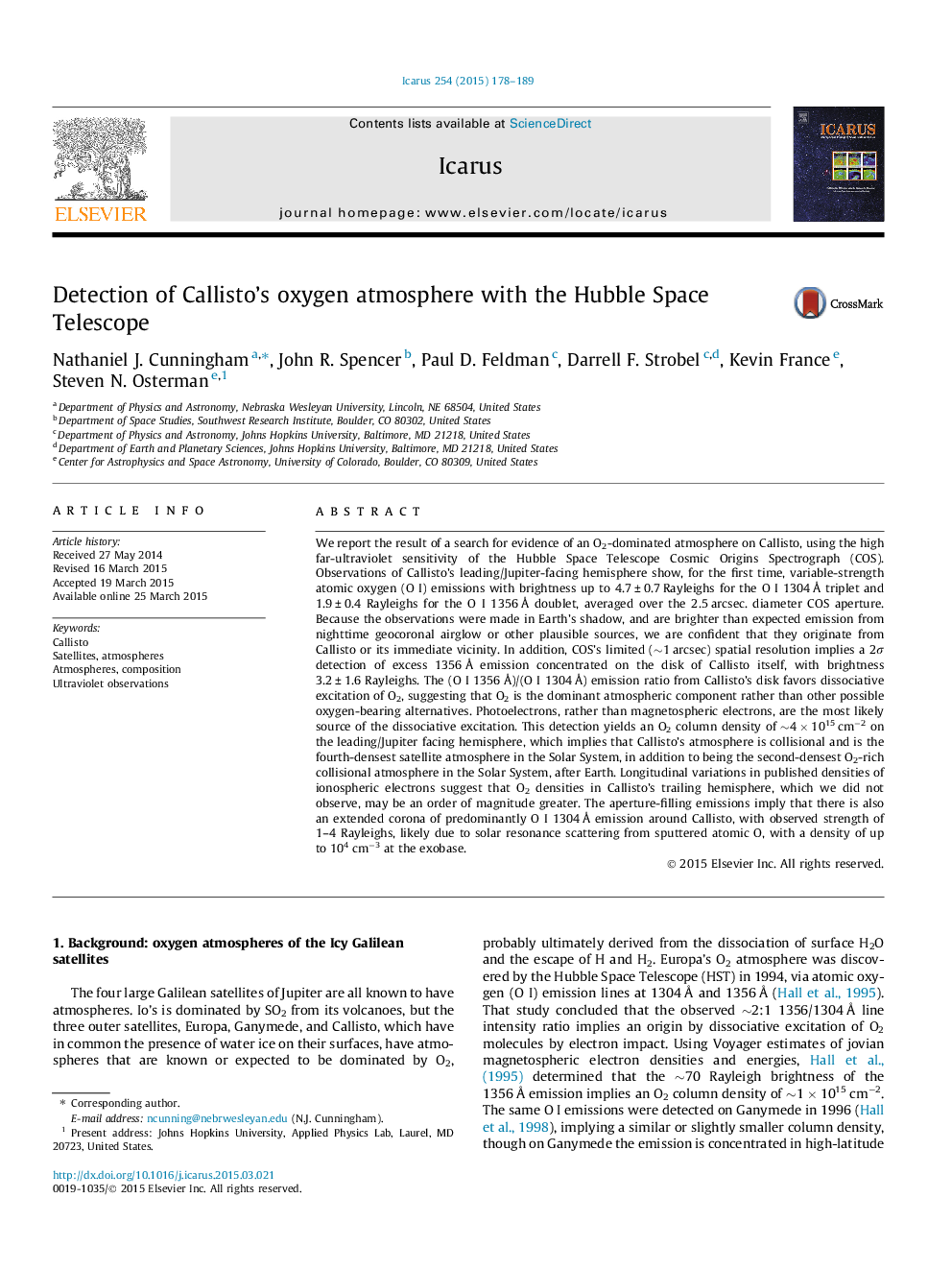| Article ID | Journal | Published Year | Pages | File Type |
|---|---|---|---|---|
| 8136280 | Icarus | 2015 | 12 Pages |
Abstract
We report the result of a search for evidence of an O2-dominated atmosphere on Callisto, using the high far-ultraviolet sensitivity of the Hubble Space Telescope Cosmic Origins Spectrograph (COS). Observations of Callisto's leading/Jupiter-facing hemisphere show, for the first time, variable-strength atomic oxygen (O I) emissions with brightness up to 4.7 ± 0.7 Rayleighs for the O I 1304 Ã
triplet and 1.9 ± 0.4 Rayleighs for the O I 1356 Ã
doublet, averaged over the 2.5Â arcsec. diameter COS aperture. Because the observations were made in Earth's shadow, and are brighter than expected emission from nighttime geocoronal airglow or other plausible sources, we are confident that they originate from Callisto or its immediate vicinity. In addition, COS's limited (â¼1Â arcsec) spatial resolution implies a 2Ï detection of excess 1356Â Ã
emission concentrated on the disk of Callisto itself, with brightness 3.2 ± 1.6 Rayleighs. The (O I 1356 Ã
)/(O I 1304Â Ã
) emission ratio from Callisto's disk favors dissociative excitation of O2, suggesting that O2 is the dominant atmospheric component rather than other possible oxygen-bearing alternatives. Photoelectrons, rather than magnetospheric electrons, are the most likely source of the dissociative excitation. This detection yields an O2 column density of â¼4Â ÃÂ 1015Â cmâ2 on the leading/Jupiter facing hemisphere, which implies that Callisto's atmosphere is collisional and is the fourth-densest satellite atmosphere in the Solar System, in addition to being the second-densest O2-rich collisional atmosphere in the Solar System, after Earth. Longitudinal variations in published densities of ionospheric electrons suggest that O2 densities in Callisto's trailing hemisphere, which we did not observe, may be an order of magnitude greater. The aperture-filling emissions imply that there is also an extended corona of predominantly O I 1304Â Ã
emission around Callisto, with observed strength of 1-4 Rayleighs, likely due to solar resonance scattering from sputtered atomic O, with a density of up to 104Â cmâ3 at the exobase.
Related Topics
Physical Sciences and Engineering
Earth and Planetary Sciences
Space and Planetary Science
Authors
Nathaniel J. Cunningham, John R. Spencer, Paul D. Feldman, Darrell F. Strobel, Kevin France, Steven N. Osterman,
